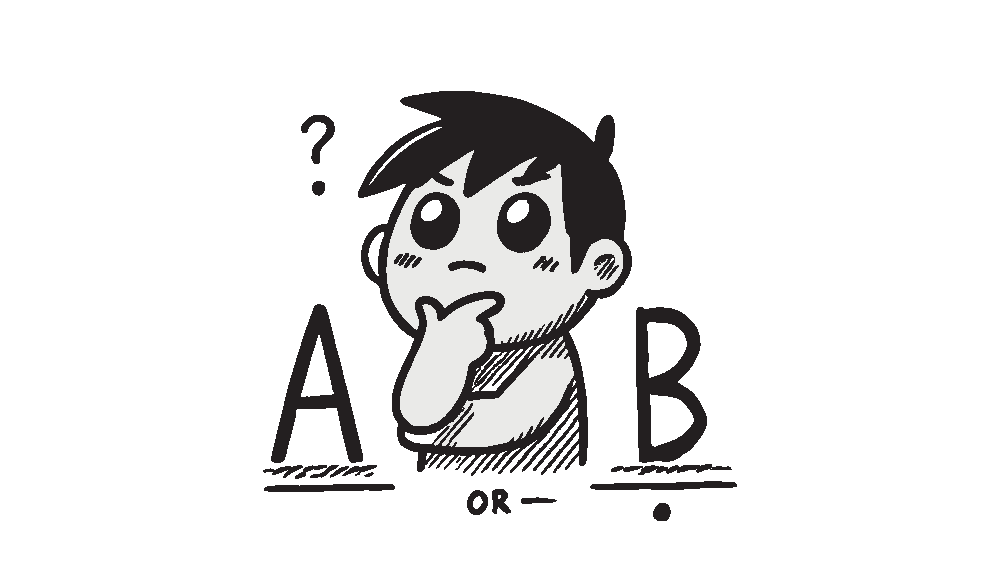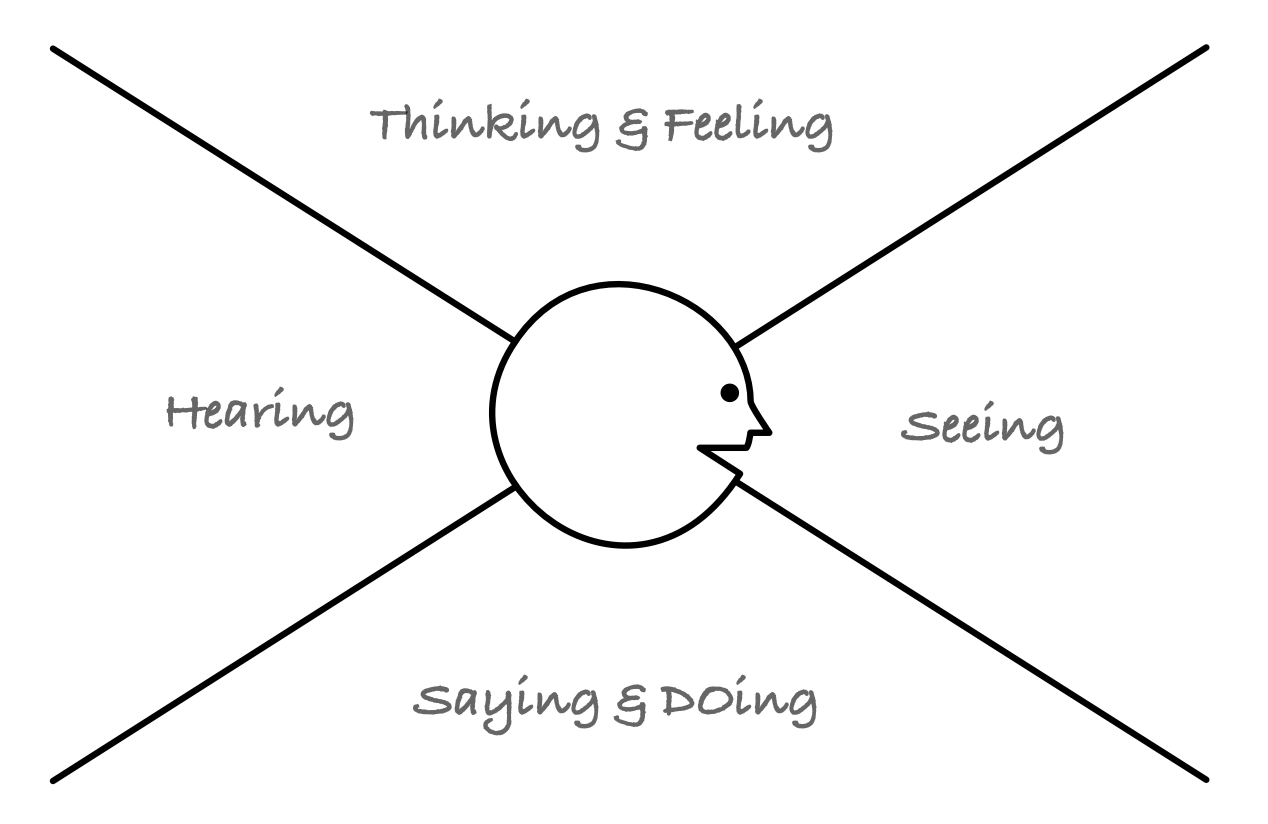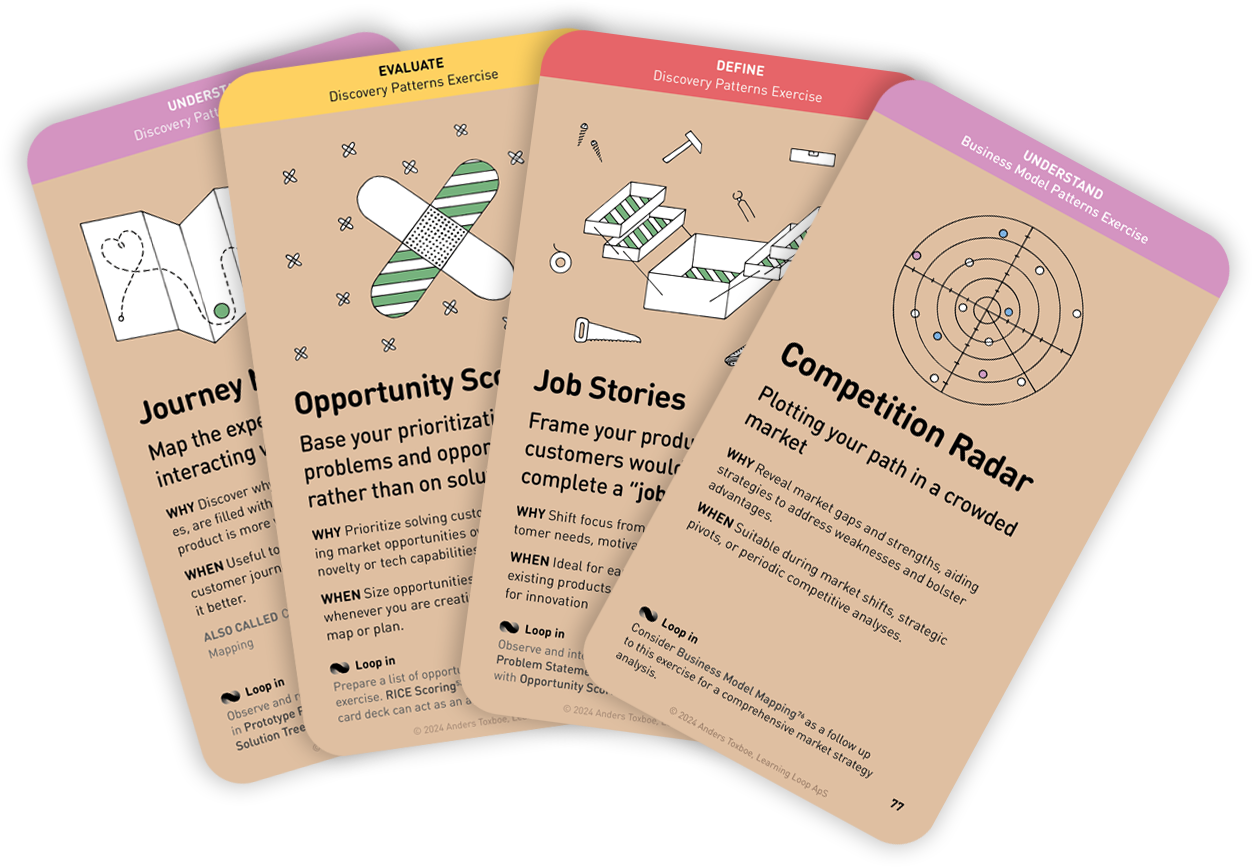Workshop Exercises: Understand
Behavioral Empathy Mapping
Understand user and customer motivations behaviorally

Why: Understand users’ psychological motivations and contexts by building a richer view of the user.
When: Use to establish an understanding of the users for which your product aims to change or influence behaviors.
While traditional empathy maps proficiently capture what users say and do (overt behaviors), they often miss the underlying thoughts, emotions, motivations, and beliefs (covert behaviors) that actually govern those actions. This adaptation of traditional empathy mapping seeks to shed light on the covert cognitive processes that go through users as they interact with products, providing a window into the unseen, unspoken, and often unconscious aspects of user behavior.
Behavioral Empathy Mapping exposes emotional states, inherent biases, and potential barriers faced by users, allowing designers to identify emotional triggers, uncover impeding biases, and recognize barriers that may hinder user engagement and behavior change. This in turn can aid designers in developing interventions that are empathetic, user-centered, and psychologically informed, ensuring the designed solutions are aligned with the actual needs and emotional states of the users.
Beyond simply understanding the barriers and impediments, Behavioral Empathy Mapping also facilitates the identification of enablers and opportunities unique to specific user profiles. The exercise can help uncover the psychological levers and contextual factors that can make behavior change more accessible and appealing to users. By pinpointing these enablers, designers can tailor interventions to leverage existing motivations, preferences, and behaviors, creating an environment conducive to behavior change.
Instructions for running this play
- Define target behavior. Start by defining the target behavior you aim to understand or influence. This provides context for the evidence you will later classify.
- Draw Empathy Map
On a large surface, draw quadrants representing different dimensions of user experience, such as Behaviors, Thinking/Saying, and Feeling, and write the user goal in the middle.

- List key observations
Conduct a 10-minute individual Silent Storming exercise, asking participants to write down key observations about the user on separate sticky notes and let them place them on the surface. Discuss the results collectively. - Classify observations listed on the canvas in categories (here, using the EAST framework) using a marker, dot sticker, or similar mechanism:
- Easy – things that the user could benefit from being easier to do.
- Attractive – things that the user either doesn’t notice or does not think much of.
- Social – things that could have or lack a social aspect.
- Timely – things that the user will only engage in or act on if the timing is precise.
- Map barriers and enablers
Identify and map barriers and enablers for each observation. - Ideate solutions
Based on identified barriers, enablers explore relevant persuasive patterns to ideate psychology-informed design solutions. - Write** How Might We… **questions for the insights with the most critical barriers and promising enablers, using the Persuasive Patterns card deck to suggest solutions.
Tips to perfect this play
Master and adapt the play to fit your context and needs.
Tip: Extend workshop with behavioral framework
Common frameworks used are COM-B, MINDSPACE, or EAST (as described in this version of the exercise).
Tip: Extend interviews with a behavioral lense
Consider extending not only the workshop, but also the interviews providing data for the workshop with behavioral models to understand what is driving the "doing" part.
A collection of workshop exercises that will help you ditch dull meetings and facilitate with confidence. It will help you master the design process and have more productive time with your team. The card deck will be ready for purchase in the end of 2026 and is now undergoing rigorous testing.
Reserve your deck!- Three Creativity Challenges from IDEO’s Leaders by Dave Gray
- UX Research: Empathy Mapping and Proto-Personas by Sara Fortier

